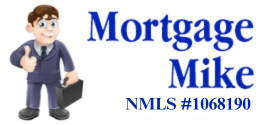Should You Retire On Your House?
Many American households will face a significant retirement financing gap unless they save more, invest more efficiently, retire later, and/or distribute their retirement assets more efficiently. Yet the pain of such difficult behavioral changes might be mitigated by better use of an asset that almost 80 percent of retirees have: the family home.
The Reverse Mortgage Explained
The mechanism is a reverse mortgage (also known as a HECM, or a home equity conversion mortgage), which is a federally-guaranteed and regulated product that allows homeowners over age 62 to access some of their home equity as periodic payments or a line of credit. This mortgage is repaid with interest on the death of the borrower (or when he or she moves out). It is a “non-recourse” loan, which means the borrower will never owe more than the loan balance or the value of the property, whichever is less. Currently, fewer than 2 percent of retired households use reverse mortgages in the US.
In my recent monograph with a colleague, we investigated the idea that many American retirees could use reverse mortgages to substantially boost their retirement consumption. While several payment plans are available, our paper explores the “tenure” option, where payments to the retiree are made for as long as the borrower lives in the home. This is the most effective way to solve the problem of a retirement income gap, and it also permits the possibility of leaving some bequest, which motivates nearly two-thirds of retired households.
Understanding For Whom It’s Useful
For retirees with some modest assets but a more significant home value, a reverse mortgage under the tenure payment plan might make sense. In particular, a reverse mortgage is probably best-targeted at the middle of the wealth distribution — those having financial assets of $3,000 and a house valued at $60,000 on the lower end, and financial assets of $290,000 and house of $250,000 on the upper end. Our analysis of the data suggests that about 14 percent of the retired population would find a reverse mortgage suitable, and they would receive about a 19 percent income boost from a reverse mortgage.
Paragraphs taken from Forbes.com article “Should You Retire On Your House”

